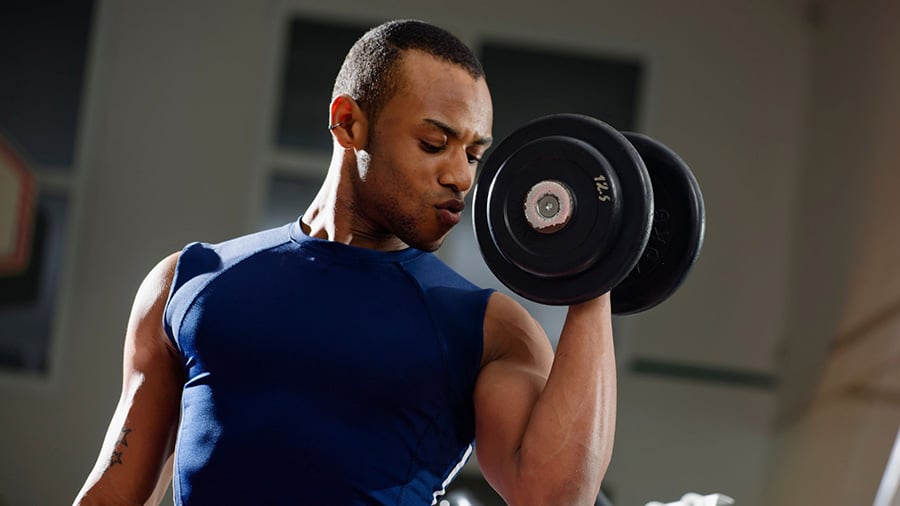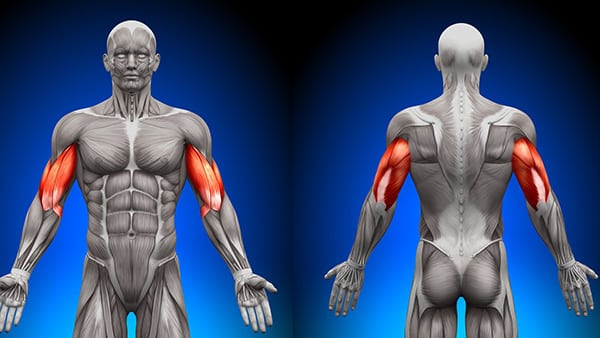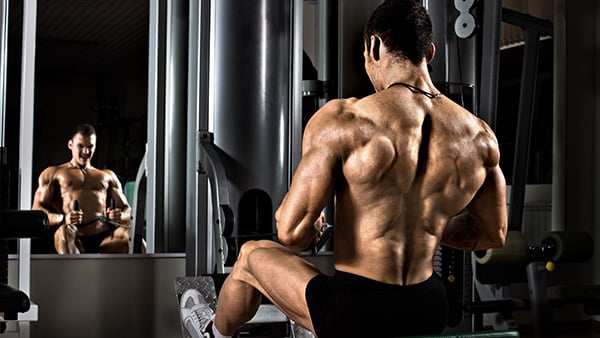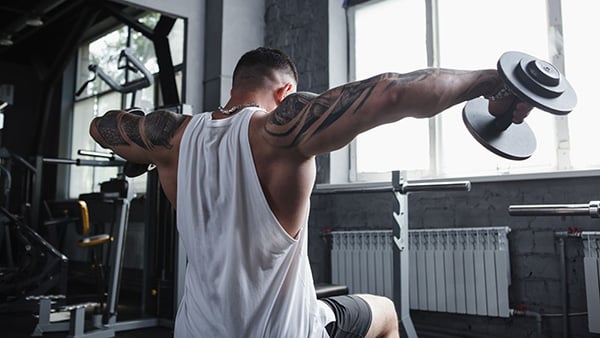Do you want to gain muscle mass, but are not making enough progress during your sessions? Maybe it's time to try the superset to unblock this phase of stagnation. This bodybuilding technique consists of performing several exercises in a row, without taking any rest time. In this article, you will discover the advantages of supersets, as well as some examples on different muscle groups. You will also learn how to integrate them into your program to intensify your workouts.
What is a superset in weight training?
The superset is a intensification technique which aims to link several exercises without taking a break.
Pyramid, pre-fatigue, dropset or assisted reps are other techniques well known to seasoned weight trainers. Click here to discover other intensification methods the most popular in the gym.
Coming back to the superset, the fact that you don't rest between movements allows you to significantly increase the number of reps and make the workout more intense. We'll come back to the different advantages of this method below.
There are really two main types of supersets:
- The agonist-antagonist superset, which solicits opposing muscle groups ;
- The synergistic superset, which works one and the same muscle.
The different types of supersets
The agonist-antagonist superset
To understand this variant, let's first look at the agonist and antagonist muscles.
To put it simply, the agonist muscle is the one that allows you to execute the desired movement. Conversely, the antagonist muscle allows the opposite movement to be created.
Let's imagine the case of an elbow flexion. During the contraction, the muscle used is the biceps. The biceps is therefore the agonist muscle, unlike the triceps which is the antagonist muscle.
But what happens now if you do an elbow extension? The roles are reversed. The triceps becomes the agonist, and the biceps the antagonist. Each muscle is thus defined according to the action you wish to perform.
Of course, the same function applies to the lower body with the thigh muscles. When you bend your leg, the hamstrings are agonistic, and the quadriceps antagonistic. And vice versa.
A superset training of the agonist-antagonist type therefore aims to solicit two opposing muscles, without recovery time. In addition to the muscles mentioned above, this can also involve the pectoral muscles and the back or the abdominal muscles and the lumbar muscles.
You will find examples of supersets of this type to integrate into your workouts later in this article.
The synergistic superset
Unlike the agonist-antagonist version, the superset synergy focuses on a single muscle group.
In concrete terms, the objective is to link several bodybuilding exercises targeting the same part of the body. This can be the pectoral muscles, the quadriceps, the glutes or the shoulders. Here again, there are several options available to you:
- The biset is the sequence of two movements;
- The triset designates the sequence of three movements;
- The giant set is a sequence of four to six movements.
The advantages of this training technique
Better recruitment of muscle fibers
This advantage mainly concerns the synergistic version.
By performing two exercises for the same muscle without taking a rest, you will manage to recruit its different portions. The muscle fibres will be better activated and your muscle will grow faster.
This additional metabolic stress promotes hypertrophy and muscular growthThis is interesting in all situations, whether you are gaining mass or leaning. In other words, the superset can help shock your muscles and promote your progression, because they will not be used to being solicited so intensely.
This technique is also ideal for catching up or correct a muscular asymmetry.
Saving time
The fact of linking two exercises without rest time in the same weight training session logically allows to save time.
For athletes who have a busy schedule and little time to train, this technique is a good way to optimize the muscle gain while maintaining a high volume of work.
In short, with this method, you can optimize your workouts and spend less time at the gym.
Who is the superset technique for?
This bodybuilding technique is particularly intense and challenging. It requires a perfect mastery of the execution of the movement of each exercise, under penalty of risking the injury.
In this sense, supersets are mainly aimed at experienced practitioners who wish to take advantage of the benefits of this method to build muscle. But is it suitable for beginners?
For those who are just starting to work out, it is best to focus on one exercise at a time. Learn the main basic movements and incorporate some isolation exercises at the end of your sessions.
Once you have mastered the technique of an exercise, you can do it as a superset.
Again, go gradually. Plan on no more than one superset per workout, with light loads and a controlled number of reps. Take 1 to 2 minutes of rest between each set.
Over time, you can increase the intensity. You can also use a sports coach who will guide you in your learning.
Would you like to follow a bodybuilding program to reach your goals?
Some examples of supersets
Plan 4 sets for each of these sample routines. Take 1 to 2 minutes of rest between sets.
Superset pectorals
For this superset pecsyou will have to link up:
- Bench press with barbell or dumbbells: 8 to 12 repetitions;
- Bodyweight or weighted push-ups: 10 to 20 reps (depending on your level).
Superset biceps
This sequence is ideal for recruiting the different portions of the biceps:
- EZ Bar Curl: 8 to 12 reps;
- Hammer grip curl: 8 to 12 reps.
Superset shoulders
With this combination of exercises, you should feel a burning sensation in your shoulders:
- Military bench press: 8 to 12 repetitions;
- Dumbbell or pulley lateral raises: 8 to 12 repetitions.
Superset quadriceps
By doing these two exercises in a row, you will be able to develop your thighs quickly:
- Free or guided barbell squat: 8 to 12 reps;
- Leg extension: 8 to 12 repetitions.
Superset biceps and triceps
This succession of exercises is ideal for building muscular arms and harmonious:
- Dumbbell or Pulley Curl: 8 to 12 repetitions;
- Front bar: 8 to 12 reps.
Superset pecs and back
For this upper body superset, you will have to link :
- Incline bench press: 8 to 12 repetitions;
- Horizontal pulley pull: 8 to 12 repetitions.
Superset quadriceps and hamstrings
This sequence is great for building up your legs:
- Inclined thigh press: 8 to 12 repetitions;
- Extended leg curl: 8 to 12 reps.
To conclude
You now know how to make supersets to increase the density of your workouts and build muscle. By combining two or more movements in a single set, you will maximize the effectiveness of your sessions. It is therefore an interesting alternative to optimize your time at the gym. If you're just starting out, make sure you incorporate this technique gradually into your weight-training program.










